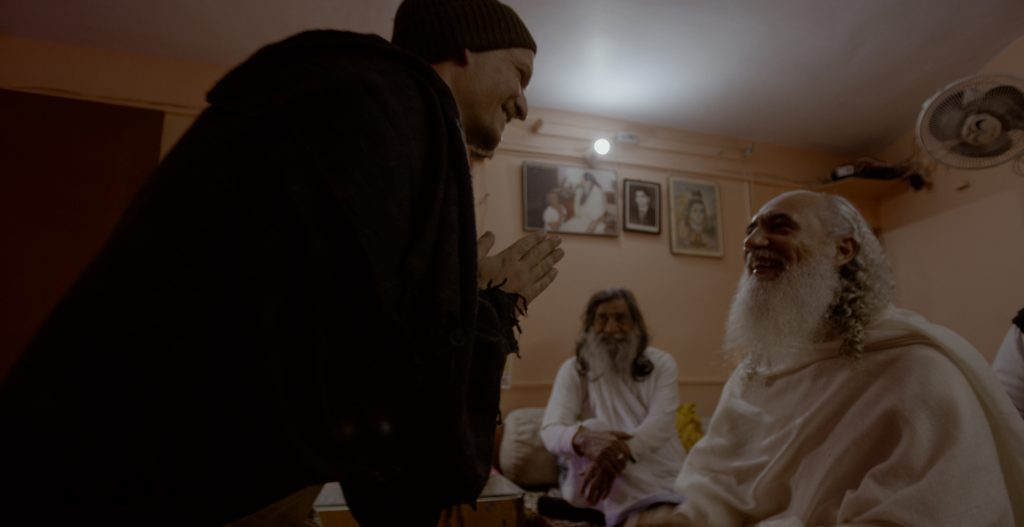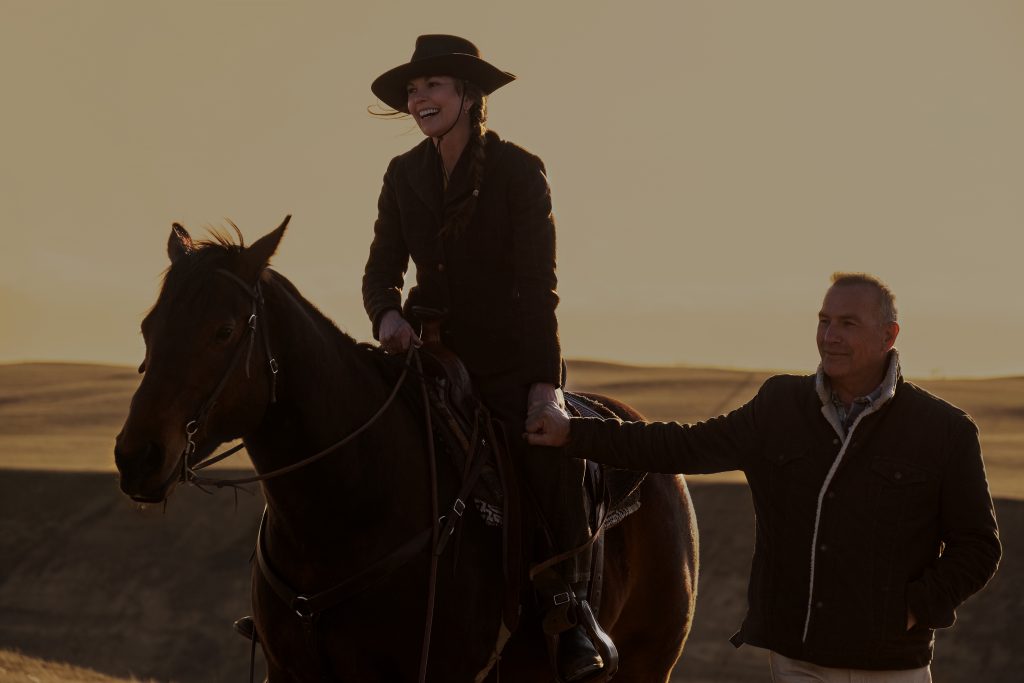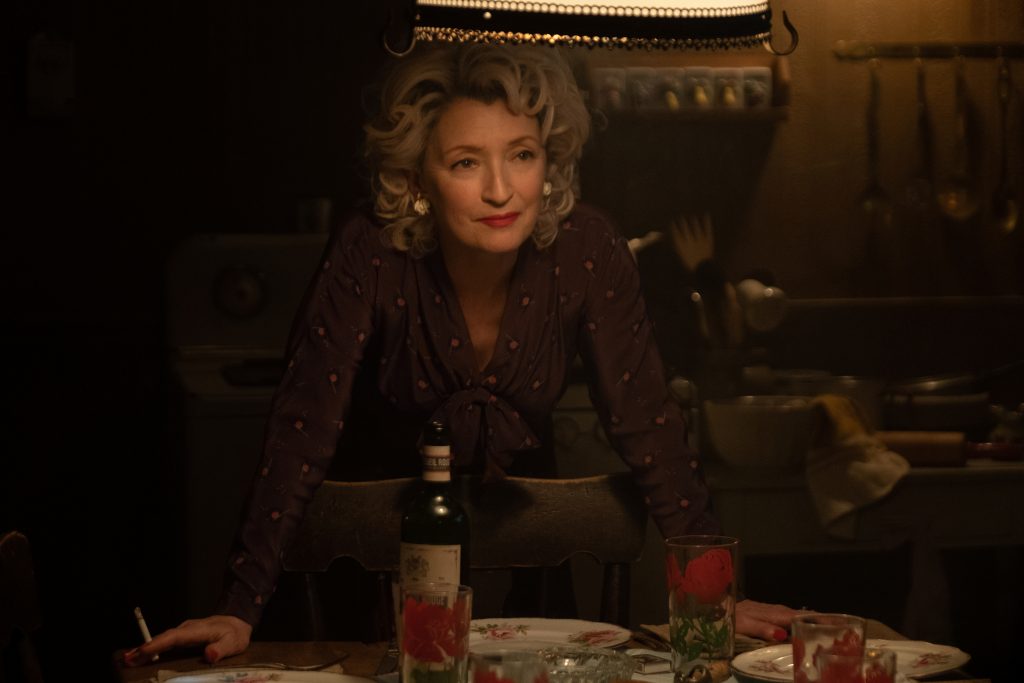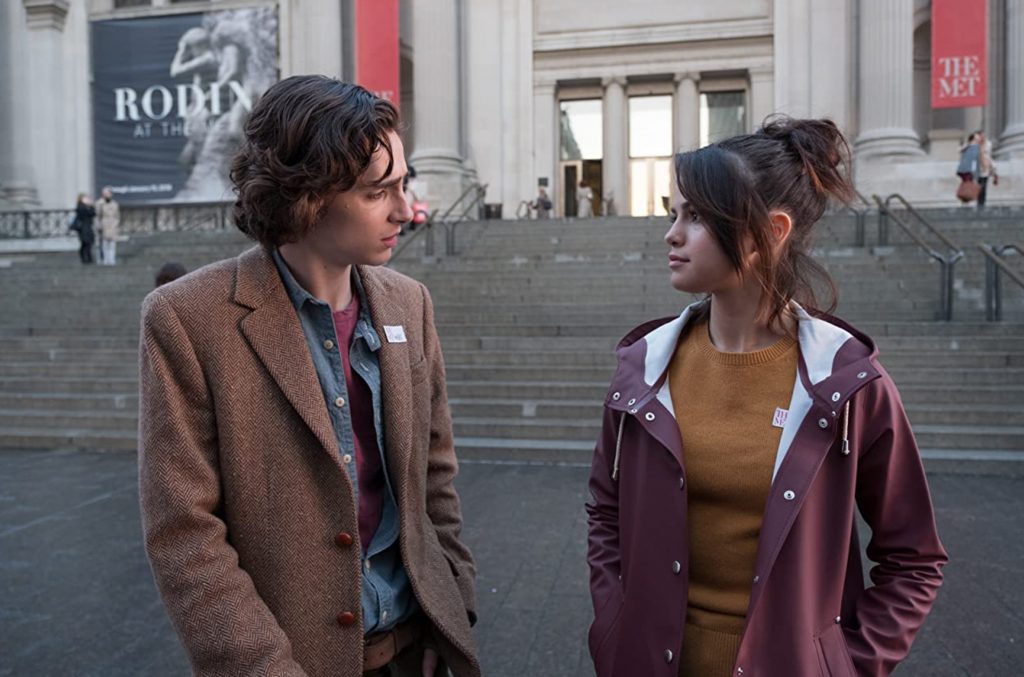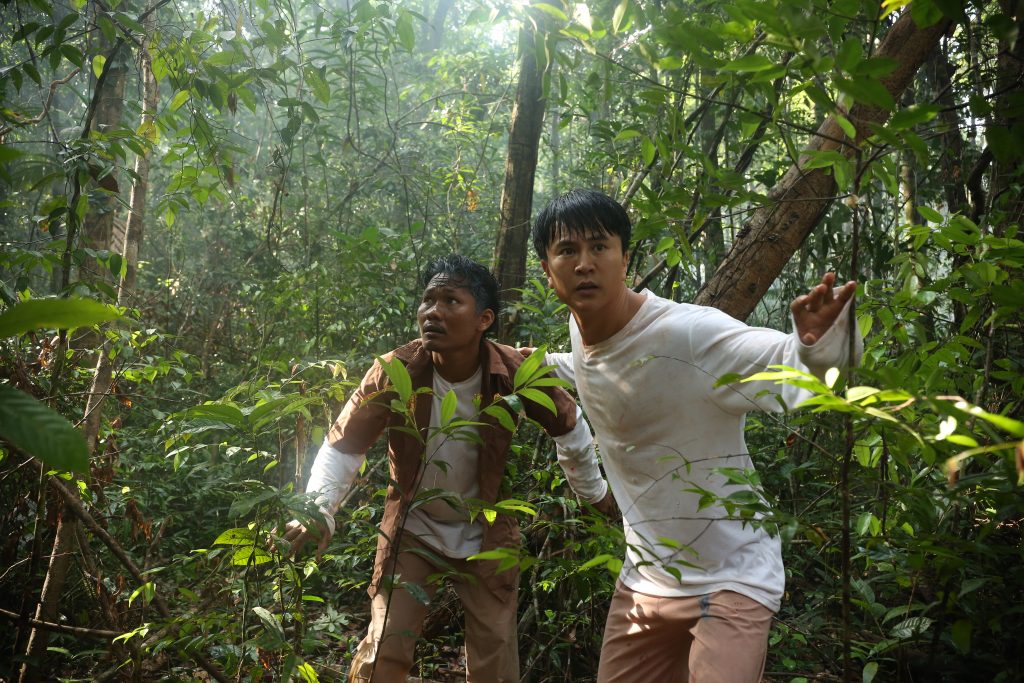November 10, 2020
by Carla Hay

Directed by Sean Cisterna
Some language in Italian with subtitles
Culture Representation: Taking place in Italy and Canada, the comedy/drama film “From the Vine” features a predominantly white cast (with one African American) representing the middle-class and working-class.
Culture Clash: Feeling guilt and sentiment about the death of his grandfather (who passed away in the 1960s), a lawyer/auto executive who’s close to retirement age upends his comfortable life in Canada to re-open a vineyard in Italy that was owned by his grandfather.
Culture Audience: “From the Vine” will appeal primarily to people who don’t mind seeing predictable movies that are filled with broad stereotypes of Italian machismo and men who go through a midlife crisis.
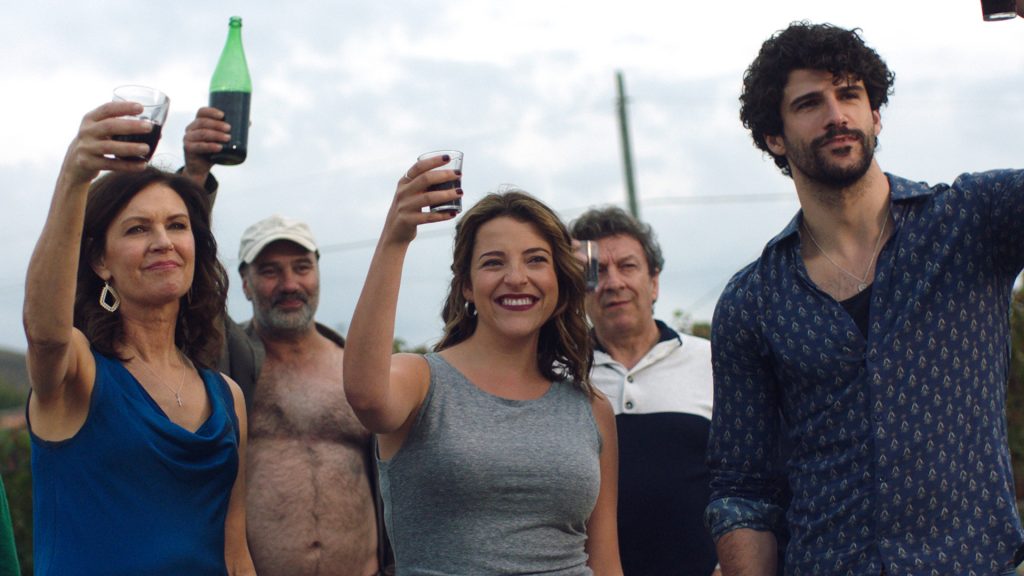
At times, there seems to be a misguided school of thought that the older someone gets, the ruder and more selfish that person is allowed to become, and people are just supposed to excuse obnoxiousness from a senior citizen. The reality is that there should be no age limit on politeness. But don’t tell that to the filmmakers of “From the Vine,” who try to make all the unpleasant old and middle-aged men in the movie look like charming eccentrics. It’s a weak premise for a movie that has a very anemic plot. Unlike the vintage wine that’s supposed to be in the movie, the film’s moldy humor does not get better with age.
Directed by Sean Cisterna, “From the Vine” was written by Willem Wennekers as an adaptation of Kenneth Canio Cancellara’s 2010 novel “Finding Marco.” The story in the movie is essentially about a man going through an “approaching retirement” crisis who decides to turn his life upside down, travel to Italy to rediscover his Italian roots, and re-open a vineyard that used to be owned and operated by his late grandfather. The man at the center of the story is Marco “Mark” Gentile (played by Joe Pantoliano), who gives a brief summary of his life in the first few minutes of the movie.
Mark, who is in his early 60s when this story takes place around 2010, was born in Acerenza, Italy, and moved to the United States with his widowed mother in the mid-1960s, when he was an adolescent. Mark’s father died before he was born. Mark got a law degree and married a Canadian graphic artist named Marina, who convinced him to permanently move to Canada. “Big fucking mistake,” Mark says bitterly in the movie. Mark and Marina have one child together named Laura.
Even though Mark has a law degree, he’s been working for the past seven years as a management executive at a corporation called Santius Automotive, which was owned by a somewhat bombastic mogul named Gordon Welsh (played by Frank Moore), who is dead but is seen in one of Mark’s many flashbacks in the movie. Mark calls Gordon a “friend and mentor.” It was Gordon’s decision to promote Mark to president/CEO of Santius Automotive.
Before Gordon died, Mark made a promise to him to make Santius automobiles more environmentally responsible, even if it would cost the company more money to do it. At a presentation meeting with investors to make the company’s annual projection plans for the coming year, Mark has prepared a presentation that would have these environmentally responsible goals and budgets. However, a sour-faced lower-ranking executive named Barbara Cavendish (played by Sonia Dhillon Tully) informs Mark shortly before the presentation that his plan is unacceptable because his proposed changes are too expensive.
Barbara gives Mark another presentation that was prepared for him, without his approval and without the environmental changes. Mark is heartsick over presenting this plan that he did not approve, because he knows it would break his promise to Gordon. The movie shows Mark at the podium going through the dilemma in his head over which plan he wants to present.
And then, the next scene is of Mark at his home in the kitchen making a romantic meal for his wife. What happened at the presentation meeting? Although it’s not shown in the movie, Mark couldn’t go through with the plan that was prepared for him, and he quit on the spot. His wife Marina (played by Wendy Crewson) is wondering why Mark is home so early, and when he tells her that he quit his job, she’s understandably upset.
Mark tries to smooth things over with Marina by presenting her with a gift: a first-class, open-ended plane ticket to southern Italy, where Mark’s side of the family is. Mark tells Marina that he’s been thinking a lot of about his late grandfather Canio Gentile, who lived in Italy. Mark lost touch with Canio when Mark was a law student. Sadly, Canio died before Mark could reconnect with him. And so, now that Mark has a lot of free time on his hands, he wants to go to Italy to rediscover his Italian roots.
Things are already rocky in Mark and Marina’s marriage. The passion has gone from their relationship (they sleep in separate bedrooms), and Mark doesn’t respect Marina enough to discuss making big decisions, based on the impulsive way that he quit his job and decided to gallivant off to Italy for an undetermined period of time. Marina is dead-set against the idea. She refuses to go on the trip with Mark and tells him that he shouldn’t go and should instead look for another job. (It’s a big change from the novel, where Mark’s wife gave her blessing for him to go to Italy by himself.)
Mark ends up going to Italy by himself, and it’s revealed later in the story that he just callously up and left Marina without telling her when he was going. She came home to find him gone, with no note or communication over where he would be staying. The only reason why Marina didn’t report him missing was because she knew that Mark had plans to go to Italy. Regardless of the problems in their marriage, it’s an incredibly selfish thing to pull that kind of disappearing act on a spouse. But that isn’t the last self-centered thing that Mark will do in his marriage to Marina.
Meanwhile, Mark’s relationship is also strained with his daughter Laura (played by Paula Brancati, who’s one of the producers of “From the Vine”), who’s in her late 20s or early 30s. Mark has made it clear to Laura that she has disappointed him, ever since she dropped out of his alma mater McGill University in Montreal, and she didn’t tell her parents for about a year. Mark has never really forgiven Laura for that deception, because while she had secretly dropped out of college, he kept sending her money that he thought was going toward her college education.
A flashback to a bitter argument between Laura and Mark shows that, to this day, Laura has never told her parents what she did with her life in the year that she secretly dropped out of college. But now, the tables have turned, and Laura and Marina are the ones angry at Mark for his irresponsible and deceptive actions. Mark eventually contacts Marina and Laura to tell them where he is in Italy, and he asks his wife and daughter to join him there. Marina and Laura adamantly refuse because they don’t want to drop everything to be at Mark’s beck and call for his aimless life in Italy.
In his first few days in Italy, Mark reconnects with a few people he knew in his childhood: Luca (played Marco Leonardi) is a very goofy police officer. Amelia (played by Rita del Piano) works as a manager of a local restaurant. Mark eventually makes his way to Canio’s vineyard, where he had many happy childhood memories.
At the vineyard, Mark meets the groundskeeper for the first time: Marcello (played by Tony Nardi), a gruff-natured man who slowly warms up to Mark over the course of the story. Marcello tells Mark that Canio was like an uncle to him. The vineyard has a middle-aged, unemployed, disheveled squatter named Enzo (played by Tony Nappo), whose only purpose in the movie is to be as annoying as possible. Marcello has unsuccessfully tried to evict Enzo, who reveals later in the story that he’s homeless because he lost his job at a wine barrel factory and his wife dumped him.
Mark visits a church, where he goes to confession and opens up about his hopes and fears about his future. The priest tells Mark to “get over himself” and advises him to do something that’s in service of something other than himself. And faster than you can say “corny plot development,” Mark announces at Amelia’s restaurant that he’s re-opening the vineyard.
The area where Canio used to live is now economically depressed and unemployment is high. And so, even though he has no experience running a vineyard, Mark decides to re-open the vineyard, so that he can help the locals and hopefully make some money if the vineyard is successful. The word gets out around town, and the next time Mark is at the vineyard, several local people (about 25) are waiting outside to ask for a job.
Mark’s way of starting the business is to hire as many local people as he can, even though none of them has experience working at a vineyard either. When Marcello protests and says it’s a bad idea, Mark just dismisses Marcello’s concerns and announces his plan to learn how to operate a vineyard: “We’ll Google it!”
The vineyard has been shut down because the property is 20 years behind on taxes. So what does Mark do to bring the vineyard out of this financial hole? He withdraws all the money from his and Marina’s retirement account and closes the account without telling Marina about it. She only finds out when a bank official contacts her to tell her what happened.
This is the last straw for Marina and Laura, who arrive unannounced in Italy to try to talk some sense into Mark. While Laura has a realistic reaction to her father going off a selfish deep end, Marina’s reaction is ultimately troubling because she lets Mark off too easily. In fact, most of this movie’s problem is that Mark is acting very unstable, but it’s laughed off by most people as Mark just being quirky.
The movie gets worse. Ever since Mark arrives in Italy, he starts hallucinating. He sees his grandfather Canio (played by Dino Becagli), who’s nicknamed Nonno, in the vineyard, as Mark starts having flashbacks to his childhood in Italy. (Michele Stefanile portrays the young Marco.) Mark also starts imagining that inanimate objects are talking to him. For example, the leaves in the grape crops taunt Mark and question his competency.
It’s all supposed to make Mark look sympathetic. It actually makes him look pathetic. People watching this movie will have a hard time getting past the fact that, despite Mark’s hallucinations, he was lucid enough to blow all of his and his wife’s retirement money on this run-down vineyard without even discussing it with her. This self-centered act of deception is essentially glossed over in the movie, which makes constant excuses for the men who behave badly in the film.
Meanwhile, the women in the movie try to act sensibly, but they end up just reacting to whatever the men do. It should come as no surprise that Marcello has a hunky nephew named Gio (played by Franco Lo Presti), who makes eyes at Laura as soon as they meet. You know exactly where this is going to go, since Mark is realistically too old to be operating the vineyard for the next 20 years.
Pantoliano has been playing the kind of “no filter” character who says and does pretty much whatever he pleases, so this role isn’t that much of a stretch for him. He seems to be going through the motions in this role, with no real emotional investment. Because Mark treats his wife like a doormat and not as an equal partner to be respected, a lot of people watching “From the Vine” won’t find a lot to like about Mark, who’s not as good-natured and smart as he likes to think he is.
Brancati is the only one in the cast who brings some realism and depth to her character. Everyone else in the movie is a vaguely written caricature with a lot of cringeworthy dialogue. And the issue of Mark’s mental illness is played for laughs as a cheap gimmick with tacky visual effects. The “jokes” in this movie aren’t very funny, and the movie’s pacing often drags. Even the most die-hard fans of Pantoliano would agree that “From the Vine” is a forgettable blip in his long career as an impressive character actor. The only thing that comes out looking good in the movie is Italy’s gorgeous landscape.
Samuel Goldwyn Films released “From the Vine” on digital and VOD on October 9, 2020.

